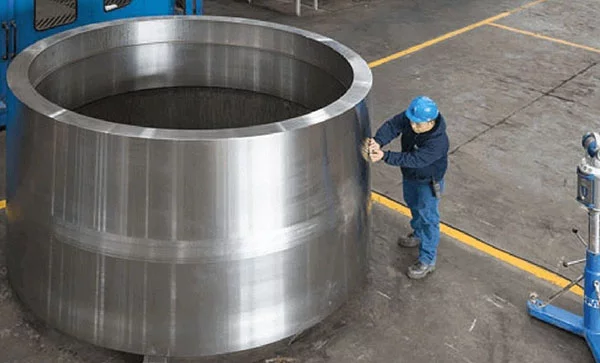Shandong Qilu lndustrial Co.,Ltd.
How Metal Working Machinery Revolutionized Industrial Manufacturing
Introduction

Metal working machinery stands as a cornerstone of industrial manufacturing, profoundly shaping the way we produce goods today. From the humble beginnings of hand-operated tools to the precision-engineered marvels of CNC (Computer Numerical Control) machines and laser cutters, this blog delves into the evolution and impact of metal working machinery on modern industry.
Evolution of Metal Working Machinery
Early Innovations
The journey of metal working machinery began with ancient civilizations using rudimentary tools like hammers and anvils to shape metals. The invention of the lathe in ancient Egypt and the development of water-powered trip hammers in ancient China marked significant advancements. These innovations enabled craftsmen to create more intricate designs and components, laying the groundwork for future developments.
During the Renaissance, craftsmen further refined metal working techniques, leading to the Industrial Revolution. This era witnessed the invention of the steam engine, which powered the first mechanized metal working machines, including lathes and milling machines. These machines mechanized tasks that were previously labor-intensive, significantly increasing production capacity and quality consistency.
Industrial Revolution
The Industrial Revolution of the 18th and 19th centuries accelerated the evolution of metal working machinery. The introduction of electric motors in the late 19th century further enhanced the capabilities of machines, enabling faster speeds and more precise control. This period saw the emergence of specialized machines for cutting, shaping, and forming metal parts, paving the way for mass production and the modern manufacturing era.
Key Technologies in Metal Working Machinery
CNC Technology
One of the most transformative advancements in metal working machinery is CNC technology. CNC machines use computer-controlled systems to automate the operation of machining tools. This technology allows for precise control over cutting, drilling, milling, and shaping operations based on digital designs (CAD models). CNC machines are capable of producing complex geometries and achieving tolerances measured in micrometers, revolutionizing manufacturing across industries such as aerospace, automotive, and electronics.
Laser Cutting and Welding
The development of laser technology brought about significant advancements in metal fabrication. Laser cutting machines use high-powered lasers to cut through metal sheets with unparalleled precision and speed. This method is favored for its ability to create intricate shapes and patterns without the need for physical contact, reducing material waste and minimizing the need for secondary finishing processes. Laser welding machines similarly use lasers to join metal parts together with minimal heat-affected zones, producing strong and precise welds suitable for critical applications in industries like automotive and medical device manufacturing.
Impact on Industrial Manufacturing
Efficiency and Productivity
Metal working machinery has revolutionized industrial manufacturing by improving efficiency and productivity. Automated processes reduce production times and labor costs while increasing output capacity. CNC machines, in particular, enable manufacturers to achieve higher levels of productivity by running continuously with minimal downtime and setup changes. This efficiency has allowed industries to meet growing demands and maintain competitive advantages in global markets.
Precision Engineering
Precision is a hallmark of modern metal working machinery. CNC machines and laser systems offer unmatched precision, allowing manufacturers to consistently produce components with tight tolerances and intricate designs. This level of precision is crucial in industries where safety, reliability, and performance are paramount, such as aerospace, defense, and medical device manufacturing. Advanced metrology tools further enhance quality control by ensuring that finished parts meet exact specifications.
| Type of Machine | Functionality | Example Application |
|---|---|---|
| CNC Milling Machine | Precise cutting and shaping of metal | Aerospace components |
| Laser Cutting Machine | High-precision cutting using laser beams | Sheet metal fabrication |
| CNC Lathe | Turning and shaping cylindrical parts | Automotive engine components |
| Press Brake | Bending and forming sheet metal | Manufacturing of chassis parts |
| Plasma Cutting Machine | Cutting metal using plasma torch | Fabrication of industrial parts |
Case Studies and Applications
Automotive Industry
In the automotive industry, metal working machinery plays a critical role in manufacturing components ranging from engine parts to chassis components. CNC machining centers and robotic welding systems are used to produce parts with high precision and consistency. The ability to mass-produce complex components efficiently has enabled automakers to improve vehicle performance, safety, and fuel efficiency.
Aerospace Industry
The aerospace industry demands the highest standards of precision and reliability in component manufacturing. Metal working machinery, including CNC milling machines and 5-axis machining centers, is used to fabricate lightweight yet durable parts for aircraft and spacecraft. These machines can handle exotic materials such as titanium and composites, ensuring that aerospace components meet stringent safety and performance requirements.
Conclusion
Metal working machinery has not only transformed industrial manufacturing but has also redefined what is possible in terms of precision, efficiency, and innovation. From ancient tools to modern CNC machines and laser systems, the evolution of metal working technology has enabled industries to push the boundaries of what can be achieved with metal materials. As technology continues to advance, metal working machinery will remain at the forefront of driving progress and shaping the future of manufacturing worldwide.
FAQ
Q:What types of metal can be processed with metal working machinery?
A:Metal working machinery can process a wide range of metals, including steel, aluminum, copper, titanium, and various alloys. Each type of metal may require specific tools and techniques tailored to its properties and intended application.
Q:How does CNC technology improve manufacturing processes?
A:CNC technology improves manufacturing processes by automating tool movements and operations based on digital instructions. This automation enhances precision, reduces human error, and increases production efficiency compared to traditional manual machining methods.
Q:What are the advantages of laser cutting over traditional cutting methods?
A:Laser cutting offers several advantages, including high precision, minimal material wastage, and the ability to cut intricate shapes and patterns with smooth edges. Unlike traditional methods like mechanical sawing or plasma cutting, laser cutting produces cleaner cuts without physical contact, reducing the need for secondary finishing processes.
